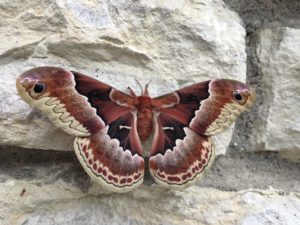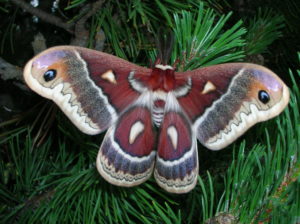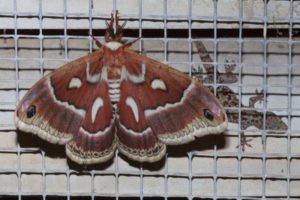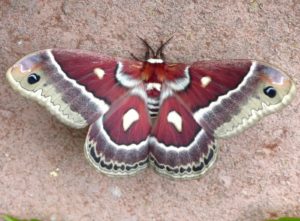Glover’s Silk Moth (Hyalophora gloveri)
The Glover’s silk moth is a saturniid moth found in North America. It is widely considered a sub-species of the Columbia silk moth and was first described by American entomologist Ferdinand Heinrich Hermann Strecker in 1872.
pbs.twimg.com
Scientific Classification
- Family: Saturniidae
- Genus: Hyalophora
- Scientific Name: Hyalophora gloveri
Description and Identification
Caterpillar
Larvae may be black and yellow, with rows of tufts of black spikes, or green and covered in blue, white, and yellow knobby bumps, depending on the instar.
Pupa
Pupation takes place after the larvae mature.
Adult Moth
Sexual Dimorphism: Present but not prominent.
Color and Appearance
These moths have hairy, gray collars near their heads, where a large white patch is also observed. The thorax is brown and covered with hair. Their antennae are large, with comb-like teeth on them. The moths have brown, hairy legs.
Forewing: When the wings are opened, they are a similar brown color as the rest of their body, with the center of the wing being darker than the edge. White lines separate the different wing segments, with white dashes also observed. When the wings are closed, the colors and patterns remain observable.
Hindwing: When the wings are opened, they are similar in appearance to the forewing, with the only observable difference being a distinct crescent-shaped white marking. When the wings are closed, the crescent pattern can still be seen.
Average wingspan: 10 cm
Flight pattern: Consistent
Season: Spring to early summer
Egg
The eggs are laid on the host plant, either in rows or singly.
Quick Facts
| Distribution | North America, including the Rocky Mountain states, the Canadian prairie provinces, the western region of the northern Great Plains, and northern Mexico. |
| Habitat | Alpine and riparian areas |
| Lifespan of Adults | Not recorded |
| Host Plants | Alder, Antelope Bitterbrush, birch, buckbrush, buffaloberry, cherry, rose, Russian Olive, and willow |
| Adult Diet | Does not feed |
Scientific Classification
- Family: Saturniidae
- Genus: Hyalophora
- Scientific Name: Hyalophora gloveri





